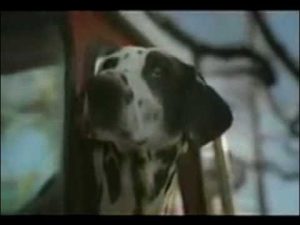
Budweiser Commercial – “Separated at Birth” (Gilley Grey, Q2 Studios): A Heartfelt Tale of Connection and Destiny
Budweiser has long been known for crafting some of the most emotional and visually stunning commercials, especially during the Super Bowl. Their advertisements are not just about selling beer—they tell powerful stories that tug at the heartstrings, often featuring themes of friendship, perseverance, and nostalgia. One of their most recent and memorable commercials, “Separated at Birth”, produced by Gilley Grey and filmed at Q2 Studios, follows in this tradition, delivering a touching narrative about family, destiny, and reunion.
The Storyline: A Tale of Two Clydesdales
The commercial opens with a breathtaking shot of a vast Midwestern farm bathed in golden morning light. A young Clydesdale foal is seen playing in an open field, its mane catching the sunlight as it runs joyfully beside its mother. The scene is peaceful, evoking a sense of warmth and innocence. But soon, the mood shifts.
A large truck pulls up to the farm, and the foal is gently loaded inside. The mother horse lets out a longing neigh as the truck drives away, disappearing into the distance. The camera lingers on her sorrowful eyes, setting up the emotional depth of the story. The audience quickly realizes that the young foal has been separated from its family at birth, taken away for training at another location.
The scene transitions to another part of the country, where the foal—now named Duke—is raised and trained among other Clydesdales. He grows into a strong, majestic horse, learning to pull the famous red Budweiser wagon with grace and discipline. Though surrounded by other horses, Duke always feels as though something is missing. There’s an emptiness in his heart, a longing he can’t quite explain.
A Fateful Encounter
The commercial then shifts to a Budweiser event years later. The iconic Budweiser Clydesdales are preparing for a grand parade, their hooves polished, their harnesses gleaming under the bright stadium lights. Duke, now fully grown, stands proudly among them, ready to perform.
As the parade begins, the Clydesdales march through the city streets, greeted by cheering crowds. The camera follows Duke closely, capturing the intensity in his eyes. But suddenly, his ears perk up. In the distance, he hears a familiar sound—a soft, haunting neigh.
The commercial cuts to a farm outside the city, where an older Clydesdale stands near a fence, watching the parade on a distant road. Her gaze is locked on Duke, and as she lets out another longing call, something inside him stirs. Recognition.
Duke abruptly stops in the middle of the parade, much to the confusion of the handlers. He looks around wildly, searching for the source of the sound. His heart races. Then, as if guided by an unseen force, he breaks from the formation, galloping away from the parade route. The handlers call after him, but Duke doesn’t stop. He knows where he must go.
The Reunion
The camera follows Duke as he charges through fields and past barns, his powerful strides carrying him toward the farm. As he reaches the fence, the older Clydesdale—his mother—steps forward. The two horses pause, staring at each other for a long moment. Then, as if confirming what they both already know, they move closer, touching noses in a gesture of deep affection.
Soft, sentimental music swells in the background, emphasizing the emotional weight of the moment. The camera captures their bond in stunning close-ups—eyes filled with understanding, years of separation dissolving in an instant. The message is clear: family will always find its way back together.
The Final Scene: A Symbol of Legacy
As the sun sets, Duke and his mother stand side by side, silhouetted against the sky. In the distance, the Budweiser wagon arrives, and Duke turns to look at it. He knows he must return—but this time, he won’t leave his mother behind. The final shot shows the Budweiser team gently leading both horses onto the wagon, symbolizing not only Duke’s journey as a Budweiser Clydesdale but also the idea that reunions, no matter how long they take, are always worth it.
The screen fades to black, and the Budweiser logo appears, accompanied by the simple yet powerful tagline:
“Family. Tradition. Budweiser.”
Production and Impact
The commercial, produced by Gilley Grey and shot at Q2 Studios, was met with an overwhelmingly positive reception. Fans praised its heartfelt storytelling, breathtaking cinematography, and emotional depth. It wasn’t just another Super Bowl ad—it was a short film that resonated deeply with viewers.
The use of real Clydesdales, rather than CGI, added authenticity to the story. The attention to detail, from the dust rising under their hooves to the subtle expressions in their eyes, made the emotions feel real. The ad’s narrative structure—separation, longing, recognition, and reunion—was a classic formula that ensured audiences remained engaged and emotionally invested.
Why It Worked
- Emotional Connection – The theme of separation and reunion is universally relatable. Whether it’s family, friends, or loved ones, everyone understands the power of reconnecting.
- Strong Visuals – The cinematography captured both the grandeur of the Budweiser brand and the intimate emotions of the horses.
- Symbolism – Budweiser isn’t just about beer; it’s about tradition, legacy, and the bonds that connect us. The Clydesdales represent history, strength, and unity—values that resonate deeply with audiences.
- Nostalgia – Many viewers have grown up watching Budweiser Clydesdale commercials, making this ad another cherished addition to their legacy.
Final Thoughts
“Separated at Birth” is more than just a Budweiser commercial—it’s a story that speaks to the heart. It reminds us that no matter how far we go, no matter how much time passes, the bonds of family and love will always find a way to bring us back together. Through the eyes of a Clydesdale, Budweiser once again delivered a message that left millions of viewers touched, proving that some of the most memorable Super Bowl moments come not from the game itself, but from the stories told in between.